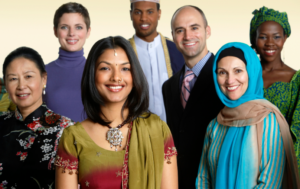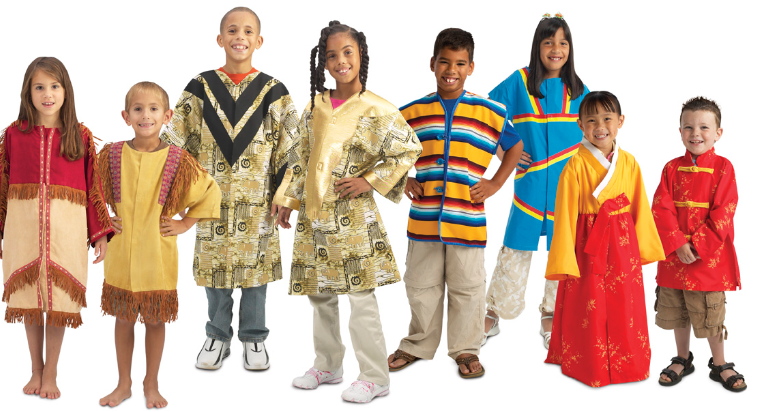|
Getting your Trinity Audio player ready...
|
The world is a tapestry woven with diverse cultures, each contributing to the vibrant mosaic of humanity. From the colourful festivals of India to the intricate tea ceremonies of Japan, every culture possesses a uniqueness that sets it apart. These cultural differences, steeped in history, tradition, and values, create a kaleidoscope of customs and practices that deserve our admiration and understanding. Let us embark on a journey to explore the remarkable and unparalleled aspects of different cultures around the world.

Festivals and Celebrations
To begin with, festivals form an integral part of many cultures, often highlighting their distinctiveness. For example, the Carnival in Rio de Janeiro, Brazil, brings together millions of people for a grand celebration filled with samba, elaborate costumes, and exuberant parades. Meanwhile, the Chinese New Year, marked by dragon dances and firecrackers, honours family values and symbolizes luck and prosperity. The Holi festival in India unites people through the joyful throwing of coloured powders. Therefore, fostering a sense of harmony and togetherness.
Cuisine and Gastronomy
One of the most delicious aspects of cultural uniqueness lies in the diverse cuisines found worldwide. Each country boasts its own culinary traditions, with signature dishes that tantalize the taste buds and tell stories of history and heritage. From the aromatic spices of Indian curries to the delicate sushi rolls of Japan, and the mouth-watering pasta of Italy, these culinary delights reflect the local produce, cooking techniques, and cultural values of each region. Sharing a meal is a universal way of connecting with others and experiencing cultural richness.
Traditional Clothing and Fashion
In addition, clothing and fashion provide a visible and tangible expression of cultural diversity. Traditional garments showcase the ingenuity and craftsmanship of different societies. For instance, the graceful kimono of Japan, the vibrant saris of India, and the elegant hanbok of Korea exemplify the artistry and cultural identity embedded within traditional clothing. By wearing and preserving these garments, individuals proudly carry their cultural heritage forward, expressing a sense of belonging and identity.
Art, Music, and Dance
Furthermore, artistic expression varies significantly across cultures, manifesting in different forms, styles, and aesthetics. The mesmerizing dance forms of ballet, flamenco, and bharatanatyam offer glimpses into the cultural soul of their respective regions. Musical traditions, such as the haunting melodies of Middle Eastern oud or the rhythmic beats of African drums, carry stories and emotions that connect generations and transcend language barriers. Indigenous art, like Australian Aboriginal dot painting or Native American totem poles, depict ancestral knowledge and beliefs, preserving cultural heritage through visual narratives.
Customs and Etiquette
Cultural customs and etiquette shape the way societies interact and communicate. They serve as guidelines for respectful behaviour and demonstrate the uniqueness of each culture’s social fabric. For instance, in Japan, the exchange of business cards, known as meishi, is a ritual that conveys respect and demonstrates professionalism. In contrast, the warm and boisterous nature of Latin American greetings embraces physical contact and expresses hospitality. Understanding and appreciating these cultural nuances foster cross-cultural understanding and build bridges of respect and acceptance.
Spiritual and Ritual Practices
Religion and spirituality provide profound insights into cultural diversity, often influencing daily life and shaping societal values. From the majestic temples of Angkor Wat in Cambodia to the serene mosques of Istanbul, sacred sites reflect architectural brilliance and devotion. Ritual practices, such as the meditation and mindfulness of Buddhism or the sacred ceremonies of indigenous tribes, highlight the quest for inner peace and connection with the divine. These spiritual practices enrich the human experience, reminding us of the awe-inspiring diversity of beliefs and traditions.
Language and Communication
Moreover, languages are the vessels through which cultures express their identity, values, and worldview. Each language carries its own nuances, grammar, and idiomatic expressions that reflect the cultural intricacies of its speakers. The preservation and celebration of indigenous languages, for example, are crucial for maintaining the cultural heritage and wisdom of indigenous communities. By embracing and learning different languages, we can gain a deeper understanding of diverse cultures. Thus fostering cross-cultural communication, and promote linguistic diversity.
Traditional Healing and Medicine
Different cultures have developed unique approaches to healing and medicine over centuries. Traditional healing practices, such as Ayurveda in India, Traditional Chinese Medicine, or Indigenous healing methods, emphasize a holistic understanding of the body-mind-spirit connection. These practices incorporate herbs, rituals, massage, and other techniques to promote balance and well-being. Embracing traditional healing methods not only offers alternative approaches to healthcare but also serves as a reminder of the profound cultural wisdom. As well as interconnectedness with nature that many cultures possess.
Conclusion
In conclusion, the world is an extraordinary tapestry woven with the vibrant threads of diverse cultures. By embracing and celebrating the diverse tapestry of world cultures, we foster understanding, empathy, and respect. Moreover, through education, preservation of cultural heritage, and cross-cultural exchange, we can build a more inclusive and harmonious global community. The community that appreciates and values the beauty of our differences.

